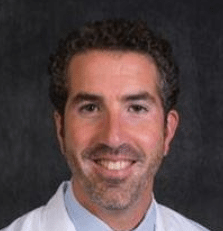
From the camaraderie to the competition, Sonny Hutchison relishes every moment on the tennis court.
“It’s that sense of community and athleticism. I think it’s the greatest sport. It requires stamina, grace, strength and strategy. It’s a challenge. Even if it’s just for fun, it gets your blood and your brain going.”
Two years ago, Hutchison’s men’s team made it to the U.S. Tennis Association sectional tournament in Utah.
Hutchison, now 69, never let on to his opponents, but he was experiencing terrible pain from arthritis throughout the tournament.
“It’s insidious. It’s deep, like a knife, and right in the joints,” Hutchison said.
His wife, Mary Anna, is his elementary school sweetheart. Thankfully, she’s also a nurse. She kept close tabs on her husband throughout the tournament and encouraged him to soak in hot baths every evening so he could try to recover from the day’s exertion on the courts.
Each morning, he’d wake up so sore that he had to walk on the treadmill for 30 minutes to loosen up so he could do more than hobble around the courts.
The Hutchisons have known each other since about age 4 when both were growing up in Louisville, Kentucky. They went on to marry after each graduated from college. Hutchison is an award-winning producer and photographer. He’s co-founder of High Noon Entertainment, which produces hit shows including Cake Boss and Fixer Upper. He and a partner also produced the critically acclaimed documentary series, How the West Was Lost for the Discovery Channel and they’ve produced numerous films for the National Park Service.
A startling discovery: can rheumatoid arthritis be related to lung problems?
Over the past few years, Hutchison had been getting treatment for two health challenges that he assumed had nothing to do with one another.
About six years ago, he had a scan to evaluate his heart health. His heart was fine, but the scan showed some spots or scarring on Hutchison’s lungs, known as pulmonary fibrosis or interstitial lung disease (ILD). He started getting treatments for his lungs.
A few years later, the joint pain began. The arthritis moved inexplicably from one area of his body, like the shoulder, to another, like his knee.

Hutchison remembers his mother having a bout of arthritis when she was in her 20s. Her Kentucky cure was plenty of lemon juice and sunshine. She never complained of joint pain again and lived to be 83.
By the time Hutchison returned home to Denver from the Utah tennis tournament, the arthritis pain was so bad he could barely get out of bed.
He started scouring the internet for information and on the Rheumatoid Arthritis Support Network’s website, found studies by doctors at the University of Colorado School of Medicine showing links between lung problems and rheumatoid arthritis.
“They’re talking about rheumatoid arthritis associated with interstitial lung disease,” said Hutchison, who was stunned to see that what he thought were unrelated conditions might be linked.
He immediately thought to himself, “Whoa. I’ve got to go talk to these people.”
Help for disparate symptoms in one place
Hutchison called and within days, was seeing experts in UCHealth’s Advanced Lung Disease Program. Dr. Aryeh Fischer, a rheumatologist, works side by side with Dr. Joyce Lee, a pulmonologist. Together, they tackle the intersection of lung problems and rheumatoid arthritis (RA). After assessments by both specialists, Hutchison learned he had RA and the interstitial lung disease was another feature of his RA.
“What’s amazing is we have two specialists from different disciplines taking care of the same disease and the same patients,” said Fischer.

RA is very common. It affects about 1 percent of the population worldwide. Few people know that RA also commonly involves organs, not just joints. And the lungs are a favorite target. Clinicians and researchers are gaining a much better understanding of how RA affects patients throughout their bodies thanks to significantly improved imaging technology.
“It’s a systematic inflammatory disease that likes the joints,” Fischer said. “But, it’s not just a joint disease. It’s a disease of the immune system that can affect multiple systems in the body. For example, RA may involve the eyes, lungs and the heart.”
Because much of the morbidity of systemic autoimmune disease involves the lungs, Dr. Fischer considers himself “a lung-obsessed rheumatologist.”
Patients see him for RA and he wants them to also undergo a chest CT scan.
“We’re learning that there aren’t hard and fast rules about this disease,” Fischer said. “The textbooks say that patients are supposed to have really bad joint disease, then you get lung disease. In real life, some people start with lung disease years before they develop arthritis. We need to break down our simplistic versions of these diseases.”
A multi-disciplinary approach is essential for patients like Hutchison.
“Can you imagine seeing a rheumatologist for 20 years and suddenly you have lung involvement and now, you’re supposed to leave that doctor and go find a lung doctor? We have silos in medicine and patients end up having to go back and forth across town to see different doctors for the same problem. And sometimes the doctors are pointing fingers at each other,” Fischer said.

UCHealth’s University of Colorado Hospital recruited both Fischer and Lee in recent years from top programs around the country. Now Colorado patients coping with RA and ILD can find the help they need in one place.
While there’s no cure for RA associated ILD, Lee said researchers are continuing to make progress.
“The horizon is bright. We’re not quite there, but it’s encouraging that there are a lot more investigators here and around the world who are working on this,” she said.
Lee and Fischer keep a close eye on Hutchison with frequent monitoring and lung function tests.
“He’s doing great,” Fischer said.
When the RA flares, Hutchison does infusions of a drug called rituximab. There aren’t as many good medicines for his lung condition, but Lee and Fischer said they expect therapies to keep improving.
“We’ve all got to keep working on this together from clinical care to research”, Fischer said.
Back on the courts
Along with ideal therapies, the causes for RA and ILD remain elusive.
Genetics may play a big role. But there are other risk factors.
Unfortunately, Hutchison has one that he wishes he could erase.
“I was a big smoker,” he said. “I’d give anything to go back and not have smoked.”
Hutchison is so athletic that it seems impossible that he was once a big smoker. Back in high school, he was the MVP his senior year for the high school tennis team.
But he and Mary Anna grew up in tobacco country.
“My uncles grew tobacco. Her mom worked at Phillip Morris,” Hutchison said.
Cigarettes were central to the community, the culture and the economy. When Mary Anna’s mom wrote checks, she proudly added a stamp to each saying, “This is tobacco money.”
She brought home endless samples of Marlboros and Virginia Slims.
Hutchison thinks he started smoking at age 9 or 10. He cringes at the memory of playing basketball with a Pall Mall hanging out of his mouth.
“I loved smoking, but I knew it killed you,” he said.

The addiction was potent.
“I tried and tried to quit. It’s brutal,” he said. “I finally quit for good in around ’87.”
In addition to the smoking being a risk, a doctor several years ago theorized that an allergy to birds could be aggravating Hutchison’s lungs.
The Hutchisons had a green and blue cockatiel with orange cheeks and a pale blue parakeet.
“We loved them. They were a pain, but they were beautiful,” Hutchison said.
Nonetheless, they got rid of the birds.
Dr. Lee said exposure to birds can cause lung problems, but she doesn’t think they were the source of Hutchison’s fibrosis.
“The main thing we’re looking into now is the role of genetics and other risk factors, including the smoking link,” Lee said.
Hutchison is grateful to have his doctors in his corner.
“They’re both brilliant,” he said.
Hutchison’s lung function tests continue to be good enough that he hasn’t needed supplemental oxygen. He works out regularly and, with his partner, is doing a film for the National Park Service on native Hawaiians.
And the tennis is going great. His team is doing well. This year, Hutchison traveled to Texas to do a weeklong camp at Australian pro John Newcomb’s tennis ranch, where he played for hours a day.
His men’s team did well again. He and his doubles partner won the club championship in their division.
And most rewarding of all are the matches he and his friends play for fun. The victors get fake trophies that the men make. (Yes, glue guns are involved and the “trophies” look like Kindergarten art projects.)
There’s plenty of trash talking and laughing during the matches. And afterwards, the men sometimes indulge in another prize.
“Occasionally, there might be a little bourbon involved,” Hutchison confides with a big grin.
And, of course, it’s from Kentucky.
